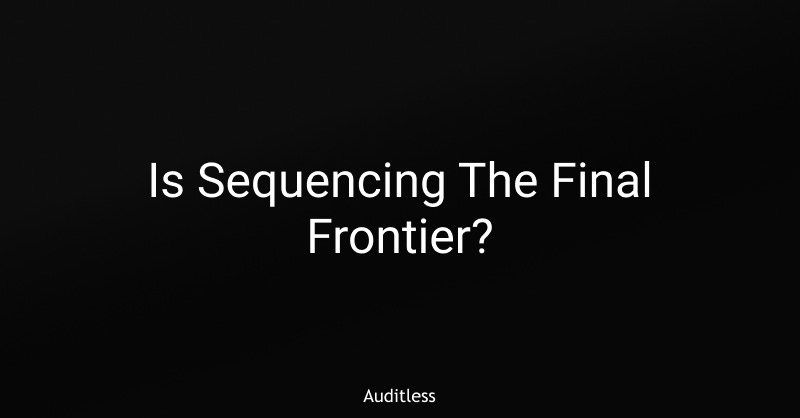Is Sequencing The Final Frontier?
Cause we don't talk about anything else.
Sequencers have quickly become the prevailing narrative driver in crypto.
In this post, I’ll explain if that is entirely justified…
My first exposure to sequencing was relatively late.
While building smart contracts on Starknet in 2022, there were several times the network went through a performance upgrade.
The solution?
Making the sequencer faster, most of the time.
This enshrined the sequencer as a key bottleneck to L2 performance in my mind.
But turns out it's much more.
What is a sequencer?
Before we start, let's recap what a sequencer is.
A sequencer is the component in an L2 that orders transactions.
The reason it has the power to order transactions is that it's the cheapest way to submit them.
L2s provide a backup path of submitting transactions directly to L1 (an important guarantee that you can always withdraw), but this path doesn't benefit from the compression effects of using a rollup in the first place.
Instead, users of L2s submit their transactions directly to the sequencer which then decides how to order them prior to block building.
Sequencers today are centralized, relying on a single appointed service to sequence transactions.
This is less dangerous than it seems.
Sequencers cannot forge transactions as they cannot forge transaction signatures.
Sequencers can, however, extract MEV by inserting new transactions or reordering existing transactions in a favorable way.
Why all we talk about is sequencing
First of all, sequencing is the primary business model of L2s today (outside of tokens) since it's the surface through which transactions are submitted.
While sequencer revenues are not comparable to CEX fees, they represent cashflow for L2s that incentivizes them to drive demand for blockspace.
Having a clear business model for L2s and appchains puts them in a favorable position compared to some protocols which are in two minds about effecting a fee to participants.
Second, sequencing is one of the remaining areas of centralization for L2s.
Sequencers are centralized for two reasons: 1) they are relatively harmless (compared to, for example, a centralized rollup contract) 2) we don't know how to decentralize them well.
The rush to decentralize them is significant with many competing implementations for “shared sequencing” – a way to share a decentralized sequencer across many rollups.
We will dive more into shared sequencing in an upcoming post.
Third, sequencing could hold the answer to MEV
In a rollup world, sequencers control the ordering of transactions.
The thought goes that by ensuring proper incentives and decentralization, the effects of MEV can be mitigated or at least internalized.
Fourth, as we move to the solver/intent/RFQ universe, transaction broadcast surfaces matter more.
Many solver-aware systems are starting to introduce ways to annotate transactions to add intent metadata or solver hints.
In this universe, the entry point to which users submit transactions becomes more important as it has to understand and process this metadata.
Fifth, sequencing affects everyone.
As a searcher, sequencers provide an existential risk to your MEV extraction.
As an app chain developer, sequencers are one of the most complex and important pieces of your stack.
And even as a smart contract developer, you need to think about sequencing.
Protocol designers are now creating sequencing-aware smart contracts that rely on transaction ordering or support new transaction types / metadata.
Finally, sequencing just has a mysterious aura.
The most interesting sequencers are still run as private services.
We just don't know that much about them.
Is Sequencing the Final Frontier?
So will sequencing solve our remaining problems in crypto?
Clearly not.
Sequencer design is only a piece of the puzzle when it comes to scalability.
And many of the technology innovations that come with sequencing will put pressur on other parts of the stack like DA and developer tooling (and many others).
One could even argue that sequencing is not our primary bottleneck as indicated by abundant blockspace.
This suggests a lack of use cases and adoption while sequencing is strictly speaking an incentive and infrastructure update (aside from some domains like gaming where it could have direct utility).
But of course sequencing remains a massive design, security and MEV bottleneck with an incredibly wide design space.
So expect to hear about it a lot more.
Certainly in this newsletter ;).





